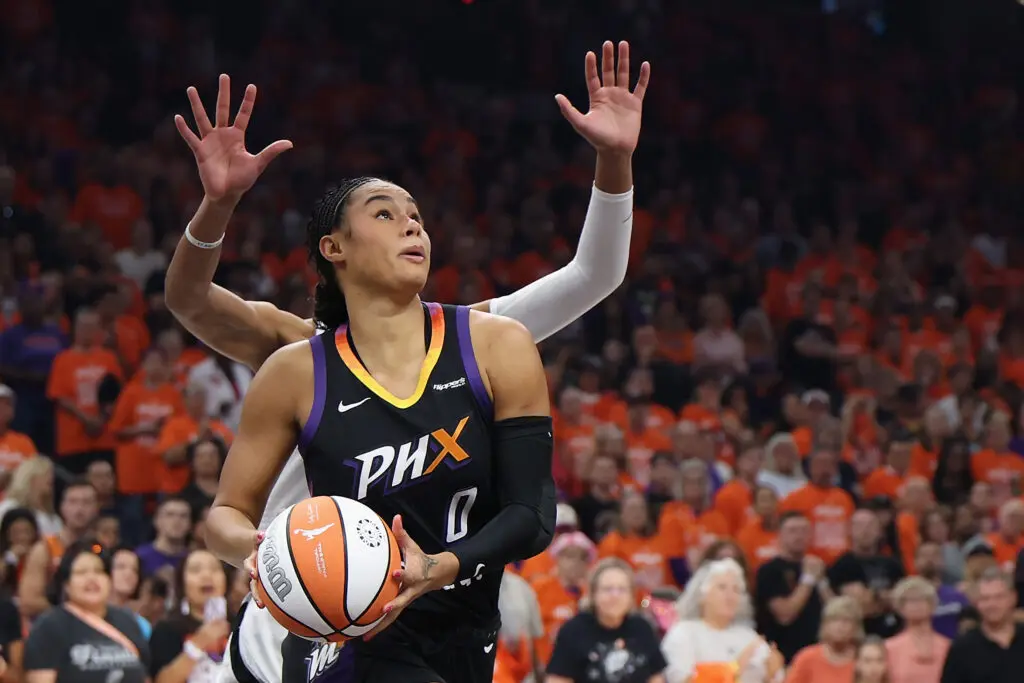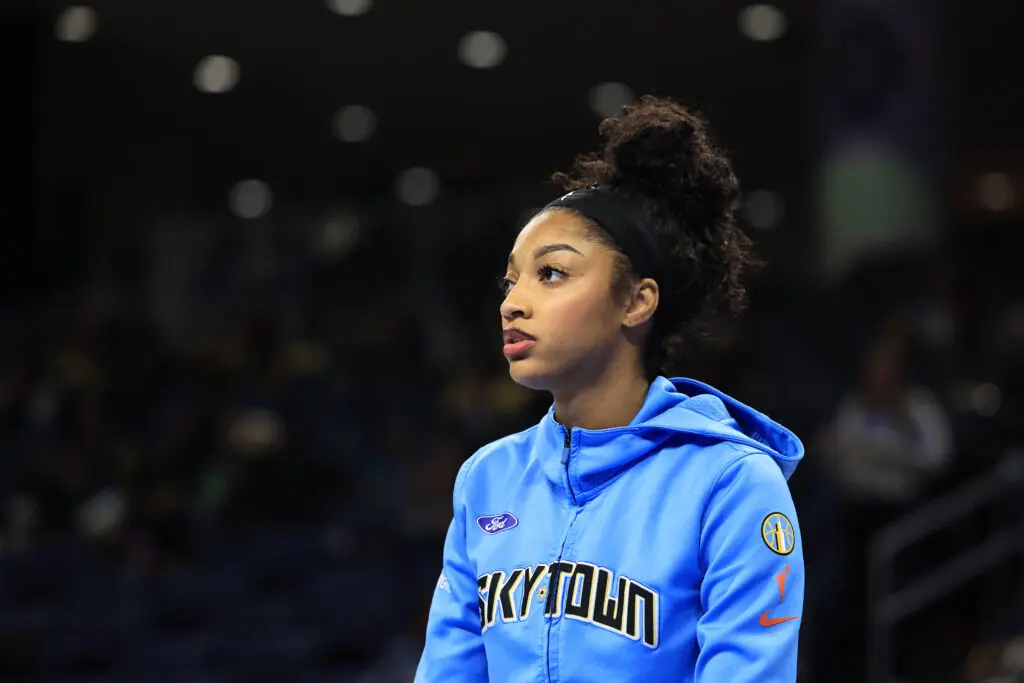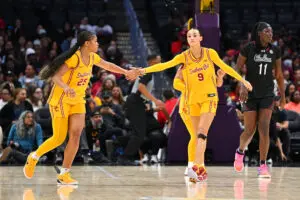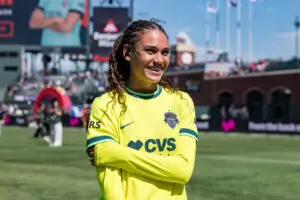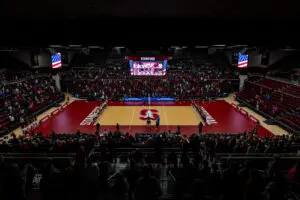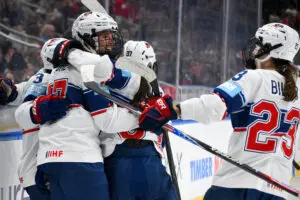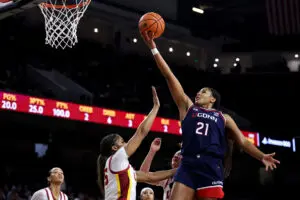DiDi Richards didn’t think about developing her personal brand. It just sort of happened.
While playing basketball for four years at Baylor, Richards sported two curly pigtails on the top of her head, which she refers to as “puffs.” During Baylor’s run to the NCAA championship in 2019, Richards started seeing her hair everywhere. It got to the point where she joked that Baylor fans liked her hair more than she did.
“I would see shirts with emblems of my hair, or people would have hats with fake puffs on top,” she said. “So I think that like accidentally became my brand. It wasn’t something I tried to do, it just happened.”
Richards graduated right before NIL opportunities opened up for college players, but now that branding is such a priority for those at the NCAA level, it has a domino effect in the WNBA as well.
The formula seems simple: The more popular players become in college, the more fans will translate to the WNBA.
Recently, many professional players have made it a priority to return to their alma maters, participating in TV broadcasts and events and mingling with fans. Not only does this give them the opportunity to relive memories with their former programs, it also helps to bridge the gap between WNBA and college fans.
“All the people that are at that school, it just shows them where the game is going on the women’s side,” said Kelsey Mitchell, who recently returned to Ohio State for two games. “It’s crazy how, when you go back, how many people you remember, and when you have conversations with them you are able to reconnect.”
Mitchell says she was able to converse with Buckeyes fans who have now become Indiana Fever fans since the guard went second overall to the team in the 2018 WNBA Draft.
Welcome back to the Schott, @Kelz_Hoop ‼️#GoBucks x @WNBA pic.twitter.com/VTGZLGHltY
— Ohio State WBB (@OhioStateWBB) January 24, 2023
On Sunday, when No. 5 UConn plays No. 1 South Carolina, Napheesa Collier will be able to do the same when she returns to Connecticut. Collier is also looking forward to bringing her daughter, Mila, around the program for the first time since she was born in May.
A lot has changed for the new mother since she left UConn, but Huskies fans have not.
Collier says she sees UConn fans at her WNBA games with the Lynx, and that the people who watched her in college have stayed loyal to her and other Huskies in the pros.
“I don’t think that is the case for everyone though,” she said. “You see a lot of diehard fans and alumni and things like that at college games, and then you see a drop-off when it comes to the league.”
UConn is a historic program with a passionate fanbase, and Collier says she feels lucky to have that kind of support behind her, no matter where she is playing. But even the fanbases of other well-known programs don’t always translate from one league to another.
When Richards was at Baylor for the Bears’ rivalry game against Texas on Jan. 22, many of the fans didn’t even know she was in the WNBA, and that shocked her.
“They saw me and they were like, ‘Oh my god, what are you doing now? Are you enjoying life after basketball?’ Some people honestly don’t know that there is a next step and that I’ve taken that next step,” she said.
Richards thinks much of that disconnect stems from the older generation of fans. The younger ones follow her and other players on social media, so they see her posting about the WNBA. For those that don’t, there need to be other avenues for increasing visibility, such as visits to campus and the NIL market.
Current college stars like Aliyah Boston, Caitlin Clark and Paige Bueckers are already growing their personal brands and becoming household names, and they will only bring more attention to the WNBA when they turn pro.
Individual marketing endeavors also open doors for other players to negotiate deals.
“I think players like Paige are setting the bar really high,” Collier said of her fellow Husky. “It helps because you can use her as a comparison. Like, ‘OK, we know you have the money because you paid her this,’ or, ‘We know you have the resources because we’ve seen it already.’ So it gives us a leveraging point.”
The NIL era changed things drastically for college athletes, and though they missed out on it themselves, Richards, Collier and Mitchell are happy to see the college game evolving. Not only does it allow student-athletes to make money, but it also educates them on the business side of basketball, something they will need in the WNBA.
“That was something that was new once we left,” Collier said. “Then you are bombarded with trying to get sponsorships and doing activations. You kind of got hit with it all at once. Now they are used to it in college.”
But the increased opportunities can also lead to more stress for student-athletes.
“Coaches have told me that sometimes it can pull focus because players are sometimes more worried about themselves,” Collier said. “You have to have a brand and you have to be marketable for sponsorships to want to pick you up. If you’re not scoring, it becomes harder.”
Overall, Collier is thrilled about the addition of NIL opportunities, as are other WNBA players who missed out on the market.
“These kids work hard,” Mitchell said. “They tap into their craft day in and day out. They are sharpening their iron. I think they should enjoy the fruits of their labor.”
And if those fruits transfer to the WNBA, all the better.
Eden Laase is a Staff Writer at Just Women’s Sports. Follow her on Twitter @eden_laase.

